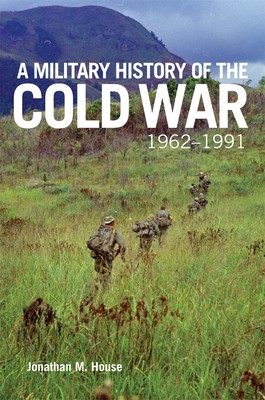
- We will send in 10–14 business days.
- Author: Jonathan M House
- Publisher: University of Oklahoma Press
- ISBN-10: 0806167084
- ISBN-13: 9780806167084
- Format: 15.2 x 22.9 x 3 cm, kieti viršeliai
- Language: English
- SAVE -10% with code: EXTRA
Reviews
Description
Study of the Cold War all too often shows us the war that wasn't fought. The reality, of course, is that many "hot" conflicts did occur, some with the great powers' weapons and approval, others without. It is this reality, and this period of quasi-war and semiconflict, that Jonathan M. House plumbs in A Military History of the Cold War, 1962-1991, a complex case study in the Clausewitzian relationship between policy and military force during a time of global upheaval and political realignment.
This volume opens a new perspective on three fraught decades of Cold War history, revealing how the realities of time, distance, resources, and military culture often constrained and diverted the inclinations or policies of world leaders. In addition to the Vietnam War and nuclear confrontations between the USSR and the United States, this period saw dozens of regional wars and insurgencies fought throughout Asia, Africa, and Latin America. Cuba, Pakistan, Indonesia, Israel, Egypt, and South Africa pursued their own goals in ways that drew the superpowers into regional disputes. Even clashes ostensibly unrelated to the politics of East-West confrontation, such as the Nigerian-Biafran conflict, the Falklands/Malvinas War, and the Indonesian occupation of East Timor, involved armed forces, weapons, and tactics developed for the larger conflict and thus come under House's scrutiny. His study also takes up nontraditional or specialized aspects of the period, including weapons of mass destruction, civil-military relations, civil defense, and control of domestic disorders. The result is a single, integrated survey and analysis of a complex period in geopolitical history, which fills a significant gap in our knowledge of the organization, logistics, operations, and tactics involved in conflict throughout the Cold War.EXTRA 10 % discount with code: EXTRA
The promotion ends in 22d.19:45:36
The discount code is valid when purchasing from 10 €. Discounts do not stack.
- Author: Jonathan M House
- Publisher: University of Oklahoma Press
- ISBN-10: 0806167084
- ISBN-13: 9780806167084
- Format: 15.2 x 22.9 x 3 cm, kieti viršeliai
- Language: English English
Study of the Cold War all too often shows us the war that wasn't fought. The reality, of course, is that many "hot" conflicts did occur, some with the great powers' weapons and approval, others without. It is this reality, and this period of quasi-war and semiconflict, that Jonathan M. House plumbs in A Military History of the Cold War, 1962-1991, a complex case study in the Clausewitzian relationship between policy and military force during a time of global upheaval and political realignment.
This volume opens a new perspective on three fraught decades of Cold War history, revealing how the realities of time, distance, resources, and military culture often constrained and diverted the inclinations or policies of world leaders. In addition to the Vietnam War and nuclear confrontations between the USSR and the United States, this period saw dozens of regional wars and insurgencies fought throughout Asia, Africa, and Latin America. Cuba, Pakistan, Indonesia, Israel, Egypt, and South Africa pursued their own goals in ways that drew the superpowers into regional disputes. Even clashes ostensibly unrelated to the politics of East-West confrontation, such as the Nigerian-Biafran conflict, the Falklands/Malvinas War, and the Indonesian occupation of East Timor, involved armed forces, weapons, and tactics developed for the larger conflict and thus come under House's scrutiny. His study also takes up nontraditional or specialized aspects of the period, including weapons of mass destruction, civil-military relations, civil defense, and control of domestic disorders. The result is a single, integrated survey and analysis of a complex period in geopolitical history, which fills a significant gap in our knowledge of the organization, logistics, operations, and tactics involved in conflict throughout the Cold War.

Reviews